Welcome to DU!
The truly grassroots left-of-center political community where regular people, not algorithms, drive the discussions and set the standards.
Join the community:
Create a free account
Support DU (and get rid of ads!):
Become a Star Member
Latest Breaking News
General Discussion
The DU Lounge
All Forums
Issue Forums
Culture Forums
Alliance Forums
Region Forums
Support Forums
Help & Search
Celerity
Celerity's Journal
Celerity's Journal
March 31, 2021
March 31 (Reuters) - President Joe Biden on Wednesday will call for a dramatic and more permanent shift in the direction of the U.S. economy with a roughly $2 trillion package to invest in traditional projects like roads and bridges alongside tackling climate change and boosting human services like elder care. He also aims to put corporate America on the hook for the tab, which is expected to grow to a combined $4 trillion once he rolls out the second part of his economic plan in April. Coupled with his recently enacted $1.9 trillion coronavirus relief package, Biden’s infrastructure initiative would give the federal government a bigger role in the U.S. economy than it has had in generations, accounting for 20% or more of annual output. The effort, to be announced on Wednesday at an event in Pittsburgh, sets the stage for the next partisan clash in Congress where members largely agree that capital investments are needed but are divided on the total size and inclusion of programs traditionally seen as social services. Just how to pay for them will be a fractious issue in its own right. Biden for now is ignoring a campaign promise and sparing wealthy Americans from any tax increase.
The plan would increase the corporate tax rate to 28% from 21% and change the tax code to close loopholes that allow companies to move profits overseas, according to a senior administration official. It does not include expected increases in the top marginal tax rate or to the capital gains tax. The plan would spread the cost for projects over an eight-year period and aims to pay for it all over 15 years, the senior administration official said. The plan also includes $621 billion to rebuild the nation’s infrastructure, such as roads, bridges, highways and ports, including a historic $174 billion investment in the electric vehicle market that sets a goal of a nationwide charging network by 2030. Congress will also be asked to put $400 billion toward expanding access to affordable home or community-based care for aging Americans and people with disabilities. There is $213 billion provided to build and retrofit affordable and sustainable homes along with hundreds of billions to support U.S. manufacturing, bolster the nation’s electric grid, enact nationwide high-speed broadband and revamp the nation’s water systems to ensure clean drinking water.
SECOND LEGISLATIVE PACKAGE COMING
Biden is moving forward with the massive job and infrastructure effort as he navigates an ambitious time line to provide enough COVID vaccines for all adults by the end of May and the deployment of pandemic relief. The White House is also dealing with a rise in the number of migrants at the southern border, the fallout from back-to-back mass shootings and a looming showdown over the Senate filibuster. The plan forms one part of the “Build Back Better” agenda that the administration aims to introduce. The White House has said the administration will introduce a second legislative package within weeks. The second package is expected to include an expansion in health insurance coverage, an extension of the expanded child tax benefit, and paid family and medical leave, among other efforts aimed at families, the officials said. White House officials have not explained whether they will seek to have both efforts pass at the same time or try to get Congress to approve one first.
The jockeying around Biden’s push has already begun, as allies push for inclusion of their priorities in the upcoming legislative effort and Republicans signal early concerns about the size and scope of the package. Moderate Democrats have said the package should be more targeted to traditional infrastructure projects to attract Republican votes, seeking a return to bipartisan policymaking. Liberal lawmakers want to use the party’s slim majorities in Congress to tackle some of the nation’s biggest problems, such as climate change and economic inequality, with resources that reflect the size of those challenges. Representative Pramila Jayapal, a leading progressive Democrat, said on Tuesday that outside groups like Americans for Tax Fairness pegged the infrastructure and jobs plan that Biden rolled out on the campaign trail at between $6.5 trillion and $11 trillion over 10 years. “We’d like to see a plan that goes big,” Jayapal said. “We really think that there’s ample room to get the overall number up to somewhere in that range in order to really tackle the scale of investments that we need to make.”
snip
Biden's plan is 4 trillion USD total, 2 trillion USD announced now, 2 trillion USD coming in April
https://www.reuters.com/article/usa-biden-infrastructure/biden-kicks-off-effort-to-reshape-us-economy-with-infrastructure-package-idUSL1N2LS2M5March 31 (Reuters) - President Joe Biden on Wednesday will call for a dramatic and more permanent shift in the direction of the U.S. economy with a roughly $2 trillion package to invest in traditional projects like roads and bridges alongside tackling climate change and boosting human services like elder care. He also aims to put corporate America on the hook for the tab, which is expected to grow to a combined $4 trillion once he rolls out the second part of his economic plan in April. Coupled with his recently enacted $1.9 trillion coronavirus relief package, Biden’s infrastructure initiative would give the federal government a bigger role in the U.S. economy than it has had in generations, accounting for 20% or more of annual output. The effort, to be announced on Wednesday at an event in Pittsburgh, sets the stage for the next partisan clash in Congress where members largely agree that capital investments are needed but are divided on the total size and inclusion of programs traditionally seen as social services. Just how to pay for them will be a fractious issue in its own right. Biden for now is ignoring a campaign promise and sparing wealthy Americans from any tax increase.
The plan would increase the corporate tax rate to 28% from 21% and change the tax code to close loopholes that allow companies to move profits overseas, according to a senior administration official. It does not include expected increases in the top marginal tax rate or to the capital gains tax. The plan would spread the cost for projects over an eight-year period and aims to pay for it all over 15 years, the senior administration official said. The plan also includes $621 billion to rebuild the nation’s infrastructure, such as roads, bridges, highways and ports, including a historic $174 billion investment in the electric vehicle market that sets a goal of a nationwide charging network by 2030. Congress will also be asked to put $400 billion toward expanding access to affordable home or community-based care for aging Americans and people with disabilities. There is $213 billion provided to build and retrofit affordable and sustainable homes along with hundreds of billions to support U.S. manufacturing, bolster the nation’s electric grid, enact nationwide high-speed broadband and revamp the nation’s water systems to ensure clean drinking water.
SECOND LEGISLATIVE PACKAGE COMING
Biden is moving forward with the massive job and infrastructure effort as he navigates an ambitious time line to provide enough COVID vaccines for all adults by the end of May and the deployment of pandemic relief. The White House is also dealing with a rise in the number of migrants at the southern border, the fallout from back-to-back mass shootings and a looming showdown over the Senate filibuster. The plan forms one part of the “Build Back Better” agenda that the administration aims to introduce. The White House has said the administration will introduce a second legislative package within weeks. The second package is expected to include an expansion in health insurance coverage, an extension of the expanded child tax benefit, and paid family and medical leave, among other efforts aimed at families, the officials said. White House officials have not explained whether they will seek to have both efforts pass at the same time or try to get Congress to approve one first.
The jockeying around Biden’s push has already begun, as allies push for inclusion of their priorities in the upcoming legislative effort and Republicans signal early concerns about the size and scope of the package. Moderate Democrats have said the package should be more targeted to traditional infrastructure projects to attract Republican votes, seeking a return to bipartisan policymaking. Liberal lawmakers want to use the party’s slim majorities in Congress to tackle some of the nation’s biggest problems, such as climate change and economic inequality, with resources that reflect the size of those challenges. Representative Pramila Jayapal, a leading progressive Democrat, said on Tuesday that outside groups like Americans for Tax Fairness pegged the infrastructure and jobs plan that Biden rolled out on the campaign trail at between $6.5 trillion and $11 trillion over 10 years. “We’d like to see a plan that goes big,” Jayapal said. “We really think that there’s ample room to get the overall number up to somewhere in that range in order to really tackle the scale of investments that we need to make.”
snip
March 31, 2021
The Crucifucks – The Crucifucks
Label:
Alternative Tentacles – VIRUS 38
Format:
Vinyl, LP, Album
Country:
US
Released:
1984
Genre:
Rock
Style:
Punk






The Crucifucks - Hinkley Had a Vision
The Crucifucks – The Crucifucks
Label:
Alternative Tentacles – VIRUS 38
Format:
Vinyl, LP, Album
Country:
US
Released:
1984
Genre:
Rock
Style:
Punk






March 31, 2021






Anger as long-awaited report on race and ethnic disparities concludes ‘claims of institutional racism not borne out’
https://www.theguardian.com/world/2021/mar/31/uk-an-exemplar-of-racial-equality-no-10s-race-commission-concludes
Downing Street’s official response to the racial justice movements connected to Black Lives Matter has suggested the UK should be seen as an international exemplar of racial equality, and has played down the impact of structural factors in ethnic disparities. The much-delayed report by No 10’s Commission on Race and Ethnic Disparities is likely to spark an angry response from activist groups, with race equality experts describing it as “extremely disturbing” and offensive to black and minority ethnic key workers who have died in disproportionate numbers during the pandemic. The commission’s chairman, Dr Tony Sewell, said the report did not deny that racism exists in Britain, but there was no evidence “of actual institutional racism”. He told BBC Radio 4’s Today programme on Wednesday: “What we have seen is that the term ‘institutional racism’ is sometimes wrongly applied and it’s been a sort of a catch-all phrase for micro-aggressions or acts of racial abuse. Also people use it interchangeably – systematic racism, structural racism [are] just being used wrongly.”
A preview summarising the report, which is described as a “major shift in the race debate”, notes that while overt racism does still exist in the UK, achievements elsewhere should make the country “a model for other white-majority countries”. It emphasises the academic achievements of children from minority ethnic backgrounds, saying that many students from these communities do as well or better than their white peers. It does, however, call for extended school days to help disadvantaged pupils catch up. The 264-page report has 24 recommendations. However, these are not yet known, as the Government Equalities Office, which is organising its release, opted to put out only a brief summary of the findings on Tuesday. One of the main conclusions of the report appears to be a pushback against the idea of structural racism. In an open rebuff to the arguments of the BLM movement, and the protests that erupted after the death of George Floyd in the US, the report is described as saying “the well-meaning idealism of many young people who claim the country is still institutionally racist is not borne out by the evidence”.
A spokesperson for Black Lives Matter UK said that while the report focused on education, “it fails to explore disproportionality in school exclusion, eurocentrism and censorship in the curriculum, or the ongoing attainment gap in higher education. “We are also disappointed to learn that the report overlooks disproportionality in the criminal justice system – particularly as police racism served as the catalyst for last summer’s protests. Black people in England and Wales are nine times more likely to be imprisoned than their white peers, and yet, four years on, the recommendations from the Lammy review are yet to be implemented.” Halima Begum, the chief executive of the Runnymede Trust, said: “As we saw in the early days of the pandemic, 60% of the first NHS doctors and nurses to die were from our BAME communities. For Boris Johnson to look the grieving families of those brave dead in the eye and say there is no evidence of institutional racism in the UK is nothing short of a gross offence. “The facts about institutional racism do not lie, and we note with some surprise that, no matter how much spin the commission puts on its findings, it does in fact concede that we do not live in a post-racist society.”
The report does note that some communities are still very affected by historical cases of racism, creating “deep mistrust” in the system, adding: “Both the reality and the perception of unfairness matter.” One conclusion is that the term BAME, (black, Asian and minority ethnic) is “of limited value” and should no longer be used by official bodies. As expected, it also calls for a move away from unconscious bias training. On pay and other work-based disparities, the report calls this “an improving picture”, saying that overall, “issues around race and racism were becoming less important and, in some cases, were not a significant factor in explaining disparities”, with areas such as social class viewed as of equal importance. The report says: “We found that most of the disparities we examined, which some attribute to racial discrimination, often do not have their origins in racism.” The language contained in the precis appears to mirror much of the thinking of Munira Mirza, the head of the Downing Street policy unit, who is seen as a particular influence on Boris Johnson on race and other cultural issues. Mirza, who oversaw the appointment of the commission panel, is a longtime and outspoken critic of previous government attempts to tackle structural factors behind racial inequality.
snip
Downing Street suggests UK should be seen as model of racial equality
Anger as long-awaited report on race and ethnic disparities concludes ‘claims of institutional racism not borne out’
https://www.theguardian.com/world/2021/mar/31/uk-an-exemplar-of-racial-equality-no-10s-race-commission-concludes
Downing Street’s official response to the racial justice movements connected to Black Lives Matter has suggested the UK should be seen as an international exemplar of racial equality, and has played down the impact of structural factors in ethnic disparities. The much-delayed report by No 10’s Commission on Race and Ethnic Disparities is likely to spark an angry response from activist groups, with race equality experts describing it as “extremely disturbing” and offensive to black and minority ethnic key workers who have died in disproportionate numbers during the pandemic. The commission’s chairman, Dr Tony Sewell, said the report did not deny that racism exists in Britain, but there was no evidence “of actual institutional racism”. He told BBC Radio 4’s Today programme on Wednesday: “What we have seen is that the term ‘institutional racism’ is sometimes wrongly applied and it’s been a sort of a catch-all phrase for micro-aggressions or acts of racial abuse. Also people use it interchangeably – systematic racism, structural racism [are] just being used wrongly.”
A preview summarising the report, which is described as a “major shift in the race debate”, notes that while overt racism does still exist in the UK, achievements elsewhere should make the country “a model for other white-majority countries”. It emphasises the academic achievements of children from minority ethnic backgrounds, saying that many students from these communities do as well or better than their white peers. It does, however, call for extended school days to help disadvantaged pupils catch up. The 264-page report has 24 recommendations. However, these are not yet known, as the Government Equalities Office, which is organising its release, opted to put out only a brief summary of the findings on Tuesday. One of the main conclusions of the report appears to be a pushback against the idea of structural racism. In an open rebuff to the arguments of the BLM movement, and the protests that erupted after the death of George Floyd in the US, the report is described as saying “the well-meaning idealism of many young people who claim the country is still institutionally racist is not borne out by the evidence”.
A spokesperson for Black Lives Matter UK said that while the report focused on education, “it fails to explore disproportionality in school exclusion, eurocentrism and censorship in the curriculum, or the ongoing attainment gap in higher education. “We are also disappointed to learn that the report overlooks disproportionality in the criminal justice system – particularly as police racism served as the catalyst for last summer’s protests. Black people in England and Wales are nine times more likely to be imprisoned than their white peers, and yet, four years on, the recommendations from the Lammy review are yet to be implemented.” Halima Begum, the chief executive of the Runnymede Trust, said: “As we saw in the early days of the pandemic, 60% of the first NHS doctors and nurses to die were from our BAME communities. For Boris Johnson to look the grieving families of those brave dead in the eye and say there is no evidence of institutional racism in the UK is nothing short of a gross offence. “The facts about institutional racism do not lie, and we note with some surprise that, no matter how much spin the commission puts on its findings, it does in fact concede that we do not live in a post-racist society.”
The report does note that some communities are still very affected by historical cases of racism, creating “deep mistrust” in the system, adding: “Both the reality and the perception of unfairness matter.” One conclusion is that the term BAME, (black, Asian and minority ethnic) is “of limited value” and should no longer be used by official bodies. As expected, it also calls for a move away from unconscious bias training. On pay and other work-based disparities, the report calls this “an improving picture”, saying that overall, “issues around race and racism were becoming less important and, in some cases, were not a significant factor in explaining disparities”, with areas such as social class viewed as of equal importance. The report says: “We found that most of the disparities we examined, which some attribute to racial discrimination, often do not have their origins in racism.” The language contained in the precis appears to mirror much of the thinking of Munira Mirza, the head of the Downing Street policy unit, who is seen as a particular influence on Boris Johnson on race and other cultural issues. Mirza, who oversaw the appointment of the commission panel, is a longtime and outspoken critic of previous government attempts to tackle structural factors behind racial inequality.
snip
March 30, 2021
https://thebanter.substack.com/p/to-fox-news-viewers-the-coronavirus

The seemingly never ending winter is over, there is a new administration in power, and vaccine distribution is ramping up at breakneck speed. Our battle with the Coronavirus is beginning to pay dividends, and there is real light at the end of the tunnel. That being said almost 1,000 people a day are still dying from COVID-19 — an astonishing number that should command pretty much all of our attention. Liberal America is still paying attention to this. In my neighbourhood in Takoma Park, Maryland, the infection rate is low, but almost everyone still wears a mask outside. Families are still isolating, relatives haven’t been seen in many months, and daily life is nowhere near back to normal. Everyone we know follows the CDC’s advice, checks the latest news on the pandemic status from reputable news sources, and gets their medical advice from actual doctors. This is decidedly not the case in Fox News’s America. According to recently polling, a third of all Republicans are not willing to take the vaccine, and almost 50% of Republican men. There are a number of reasons for this — from Donald Trump’s early politicization of the pandemic to rabid online anti vaccine disinformation in right wing circles and vaccine scepticism from people like Tucker Carlson, Republicans are completely immersed in a fact free echo chamber. More than that, many Republicans don’t really appear to be aware that the pandemic is still happening, or care.
Observing right wing madness
As an experiment, I checked through Sean Hannity’s Twitter feed to find articles he had promoted about the Coronavirus from his website SeanHannity.com. I then sifted through the responses from his followers to see what the general consensus was about the article and the pandemic. After 10 minutes of scrolling it became clear that most of the people responding were not only skeptical about the pandemic, but completely disinterested in it. Instead, they were more interested in a completely unrelated topic that has almost no impact on their lives. This was the original tweet was about an article on the CDC’s recent warning about a new Coronavirus surge:
https://twitter.com/seanhannity/status/1376579037171228678
And the responses:
https://twitter.com/LunarRight/status/1376618286088065029
https://twitter.com/scottmaiwald/status/1376584296211738624
https://twitter.com/rhondaboopope/status/1376583845785575433
https://twitter.com/ezcarguy1/status/1376610267652493313
https://twitter.com/GreenhillDawn/status/1376601305876033536
https://twitter.com/ErinJoh94034141/status/1376579750173544463
https://twitter.com/AlejandroVale47/status/1376582901605748739
https://twitter.com/Mrs_Lutrick12/status/1376583437319028747
https://twitter.com/byron_carmen/status/1376620522369384455
Instead of discussing the 549,000 Covid related deaths and the prospect of another surge killing even more people, Sean Hannity’s fans are more preoccupied with the crisis on the US/Mexico border. Admittedly there is a real emergency (although not as severe as the one during Trump’s presidency), but it pales in comparison to the monumental tragedy of the Coronavirus pandemic that continues to destroy the lives of millions of Americans. There is of course a good reason why so many of Sean Hannity’s viewers are obsessed with the crisis at the border. Fox News has covered this issue relentlessly, falsely telling its viewers that this is a “Biden surge” (it isn’t), and giving it wall to wall coverage at the expense of pretty much everything else. As Axios reported, this is an ongoing trend in the conservative media world:
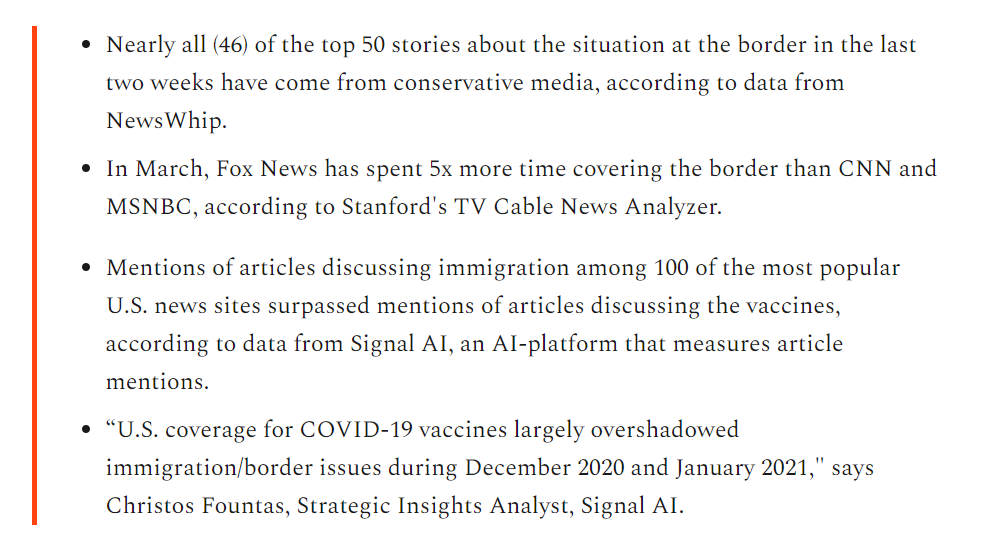
snip
To Fox News Viewers, The Coronavirus Pandemic Is Now One Big Joke
Watching Sean Hannity won’t just make you stupid, it might actually get you killed.https://thebanter.substack.com/p/to-fox-news-viewers-the-coronavirus

The seemingly never ending winter is over, there is a new administration in power, and vaccine distribution is ramping up at breakneck speed. Our battle with the Coronavirus is beginning to pay dividends, and there is real light at the end of the tunnel. That being said almost 1,000 people a day are still dying from COVID-19 — an astonishing number that should command pretty much all of our attention. Liberal America is still paying attention to this. In my neighbourhood in Takoma Park, Maryland, the infection rate is low, but almost everyone still wears a mask outside. Families are still isolating, relatives haven’t been seen in many months, and daily life is nowhere near back to normal. Everyone we know follows the CDC’s advice, checks the latest news on the pandemic status from reputable news sources, and gets their medical advice from actual doctors. This is decidedly not the case in Fox News’s America. According to recently polling, a third of all Republicans are not willing to take the vaccine, and almost 50% of Republican men. There are a number of reasons for this — from Donald Trump’s early politicization of the pandemic to rabid online anti vaccine disinformation in right wing circles and vaccine scepticism from people like Tucker Carlson, Republicans are completely immersed in a fact free echo chamber. More than that, many Republicans don’t really appear to be aware that the pandemic is still happening, or care.
Observing right wing madness
As an experiment, I checked through Sean Hannity’s Twitter feed to find articles he had promoted about the Coronavirus from his website SeanHannity.com. I then sifted through the responses from his followers to see what the general consensus was about the article and the pandemic. After 10 minutes of scrolling it became clear that most of the people responding were not only skeptical about the pandemic, but completely disinterested in it. Instead, they were more interested in a completely unrelated topic that has almost no impact on their lives. This was the original tweet was about an article on the CDC’s recent warning about a new Coronavirus surge:
https://twitter.com/seanhannity/status/1376579037171228678
And the responses:
https://twitter.com/LunarRight/status/1376618286088065029
https://twitter.com/scottmaiwald/status/1376584296211738624
https://twitter.com/rhondaboopope/status/1376583845785575433
https://twitter.com/ezcarguy1/status/1376610267652493313
https://twitter.com/GreenhillDawn/status/1376601305876033536
https://twitter.com/ErinJoh94034141/status/1376579750173544463
https://twitter.com/AlejandroVale47/status/1376582901605748739
https://twitter.com/Mrs_Lutrick12/status/1376583437319028747
https://twitter.com/byron_carmen/status/1376620522369384455
Instead of discussing the 549,000 Covid related deaths and the prospect of another surge killing even more people, Sean Hannity’s fans are more preoccupied with the crisis on the US/Mexico border. Admittedly there is a real emergency (although not as severe as the one during Trump’s presidency), but it pales in comparison to the monumental tragedy of the Coronavirus pandemic that continues to destroy the lives of millions of Americans. There is of course a good reason why so many of Sean Hannity’s viewers are obsessed with the crisis at the border. Fox News has covered this issue relentlessly, falsely telling its viewers that this is a “Biden surge” (it isn’t), and giving it wall to wall coverage at the expense of pretty much everything else. As Axios reported, this is an ongoing trend in the conservative media world:

snip
March 29, 2021
https://www.bbc.com/future/article/20210324-the-hidden-fingerprint-inside-your-photos

On 3 October 2020, the White House published two photographs of Donald Trump, signing papers and reading briefings. The day before, Trump had announced he had caught the coronavirus and these photos were apparently released to show that he was in rude health. His daughter Ivanka tweeted one of the photos with the caption: "Nothing can stop him working for the American people. RELENTLESS!" But keen-eyed observers noticed something unusual.

The photos were taken in two different rooms in Walter Reed National Military Medical Center. In one Trump wears a jacket, in the other just a shirt. Coupled with public statements about his positive health and work ethic, the implication was that he had been handling his presidential duties all day, despite his illness. The photo timestamps, however, said otherwise. The images were taken 10 minutes apart. Of course, there are other possible explanations for why they were shot so closely together. Perhaps the photographer only had access for 10 minutes, and maybe Trump always intended to switch rooms during that window. However, the White House can't have been happy that people noticed the timestamps. It led news outlets and commentators to talk about whether the images were staged for a photoshoot to project a political message, and to question whether Trump really was working so "relentlessly" after all.
It's not the only time hidden information inside a digital photo has led to unintended consequences. Just ask John McAfee, founder of the eponymous antivirus software. In 2012, he was on the run from the Belizean authorities in Central America. Reporters from Vice magazine tracked him down and published an image of him online, under the headline "We Are With John McAfee Right Now, Suckers". Yet without them realising, location data embedded in the photo inadvertently revealed that McAfee was in Guatemala. He was soon found, and detained. These are just two examples of how hidden information inside digital photos can reveal much more than the photographers and their subjects bargained for. Could your own photos be sharing more details with the world than you realise too?

When you take a photo, your smartphone or digital camera stores "metadata" within the image file. This automatically and parasitically burrows itself into every photo you take. It is data about data, providing identifying information such as when and where an image was captured, and what type of camera was used. It is not impossible to expunge metadata, using freely available tools such as ExifTool. But many people don't even realise the data is there, let alone how it might be used, so they don't bother to do anything about it before they post images online. Some social media platforms remove information like geolocation (though only from public view), but many other websites do not. This lack of awareness has proven useful for police investigators, to help them place unwitting criminals at a scene. But it also poses a privacy problem for law-abiding citizens if the authorities can track their activities through images on their camera and social media. And unfortunately, savvy criminals can use the same tricks as the police: if they can discover where and when a photo was taken, it can leave you vulnerable to crimes such as burglary or stalking.
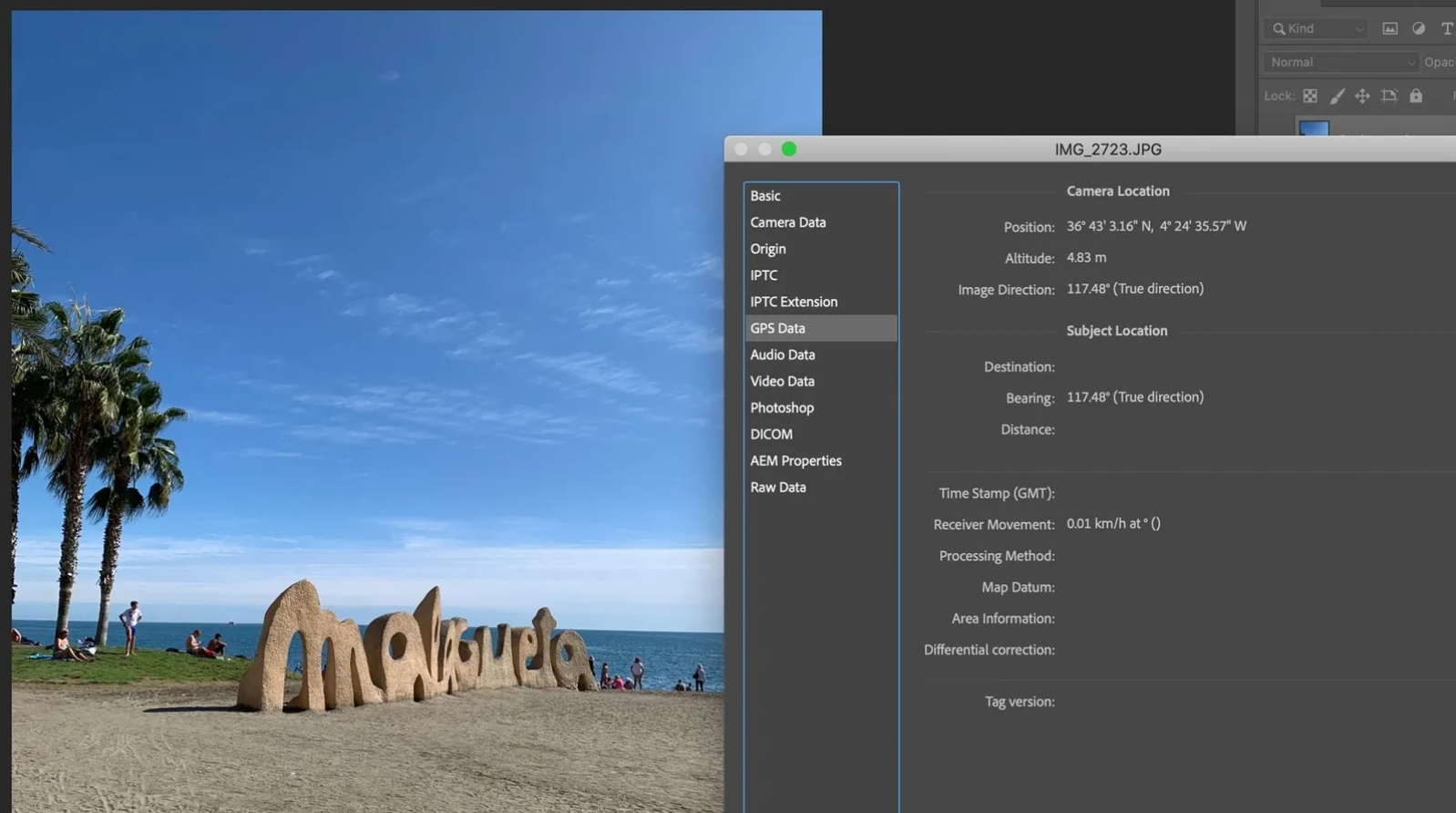
snip
BBC: The hidden fingerprint inside your photos
They say a picture is worth a thousand words. Actually, there's a great deal more hidden inside the modern digital image, says researcher Jerone Andrews.https://www.bbc.com/future/article/20210324-the-hidden-fingerprint-inside-your-photos

On 3 October 2020, the White House published two photographs of Donald Trump, signing papers and reading briefings. The day before, Trump had announced he had caught the coronavirus and these photos were apparently released to show that he was in rude health. His daughter Ivanka tweeted one of the photos with the caption: "Nothing can stop him working for the American people. RELENTLESS!" But keen-eyed observers noticed something unusual.

The photos were taken in two different rooms in Walter Reed National Military Medical Center. In one Trump wears a jacket, in the other just a shirt. Coupled with public statements about his positive health and work ethic, the implication was that he had been handling his presidential duties all day, despite his illness. The photo timestamps, however, said otherwise. The images were taken 10 minutes apart. Of course, there are other possible explanations for why they were shot so closely together. Perhaps the photographer only had access for 10 minutes, and maybe Trump always intended to switch rooms during that window. However, the White House can't have been happy that people noticed the timestamps. It led news outlets and commentators to talk about whether the images were staged for a photoshoot to project a political message, and to question whether Trump really was working so "relentlessly" after all.
It's not the only time hidden information inside a digital photo has led to unintended consequences. Just ask John McAfee, founder of the eponymous antivirus software. In 2012, he was on the run from the Belizean authorities in Central America. Reporters from Vice magazine tracked him down and published an image of him online, under the headline "We Are With John McAfee Right Now, Suckers". Yet without them realising, location data embedded in the photo inadvertently revealed that McAfee was in Guatemala. He was soon found, and detained. These are just two examples of how hidden information inside digital photos can reveal much more than the photographers and their subjects bargained for. Could your own photos be sharing more details with the world than you realise too?

When you take a photo, your smartphone or digital camera stores "metadata" within the image file. This automatically and parasitically burrows itself into every photo you take. It is data about data, providing identifying information such as when and where an image was captured, and what type of camera was used. It is not impossible to expunge metadata, using freely available tools such as ExifTool. But many people don't even realise the data is there, let alone how it might be used, so they don't bother to do anything about it before they post images online. Some social media platforms remove information like geolocation (though only from public view), but many other websites do not. This lack of awareness has proven useful for police investigators, to help them place unwitting criminals at a scene. But it also poses a privacy problem for law-abiding citizens if the authorities can track their activities through images on their camera and social media. And unfortunately, savvy criminals can use the same tricks as the police: if they can discover where and when a photo was taken, it can leave you vulnerable to crimes such as burglary or stalking.

snip
March 28, 2021

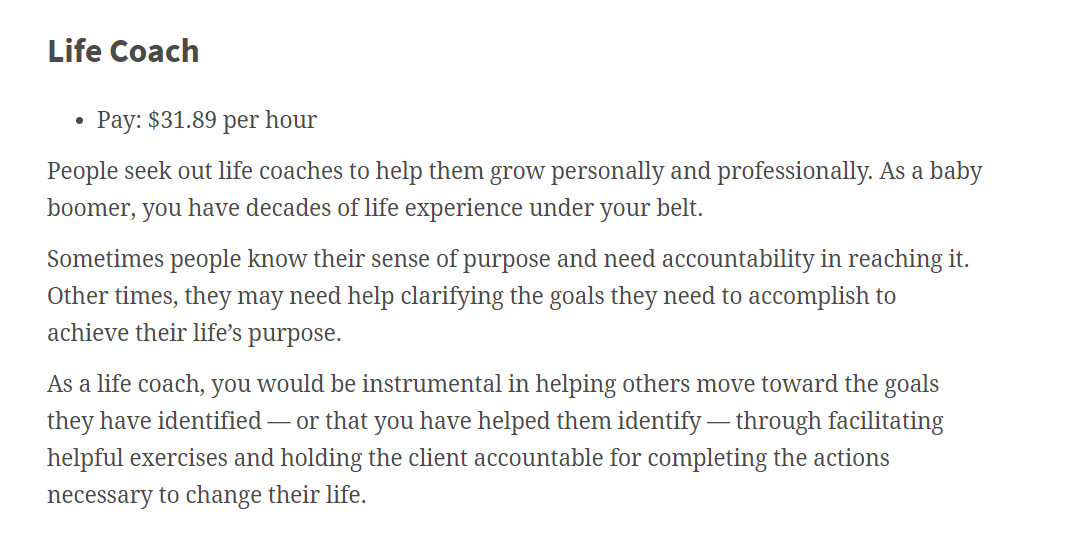


snip
27 Most Lucrative Side Hustles for People Over 50
https://www.gobankingrates.com/money/side-gigs/most-lucrative-side-hustles-people-over-50



snip
March 28, 2021
https://www.thrillist.com/drink/nation/pink-boots-society-women-owned-brewing
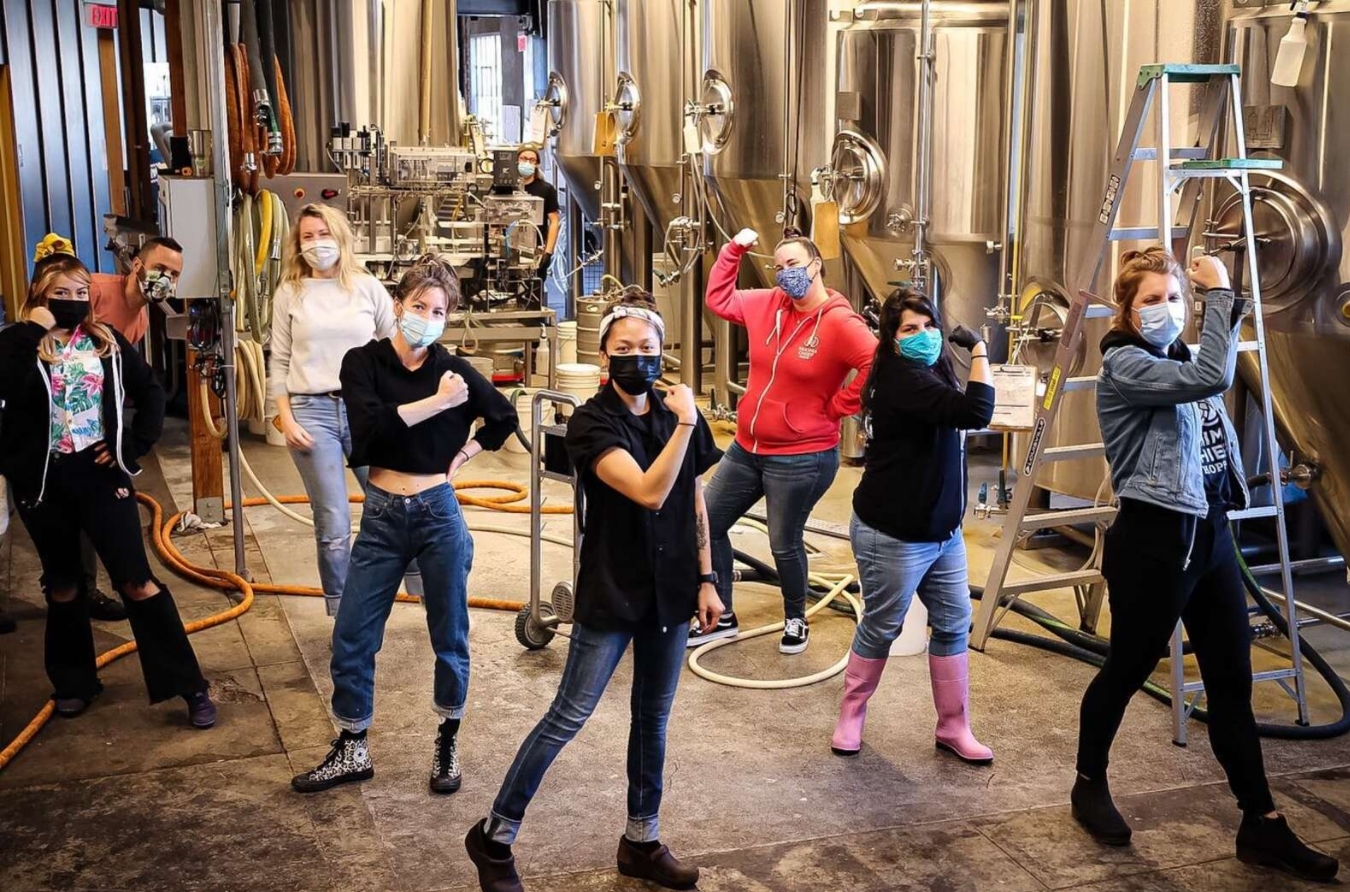
For nearly 15 years, the Pink Boots Society has made it its mission to educate and encourage more women to work in the craft beer world. But this past year was one full of reckoning, and the group realized that its intentions weren’t inclusive enough. “There used to be this tendency to point fingers at individual people or businesses as racist,” says Jen Jordan, president on behalf of the Pink Boots Society board of directors and a brewer at San Francisco’s Laughing Monk Brewing. “That still happens, but I think people are getting educated and understanding that looking internally is the way to go if you really want to make change.” In the wake of the surging Black Lives Matter movement and AAPI community support, in tandem with continued revelations around the #MeToo movement, industries across the globe are tackling their own systemic inequities. Craft beer is no exception. Race- and gender-based discrimination accusations have erupted at prominent outposts like Founders, Boulevard, and Angry Orchard, prompting the Brewers Association to adopt its first ever Code of Conduct in August 2020.
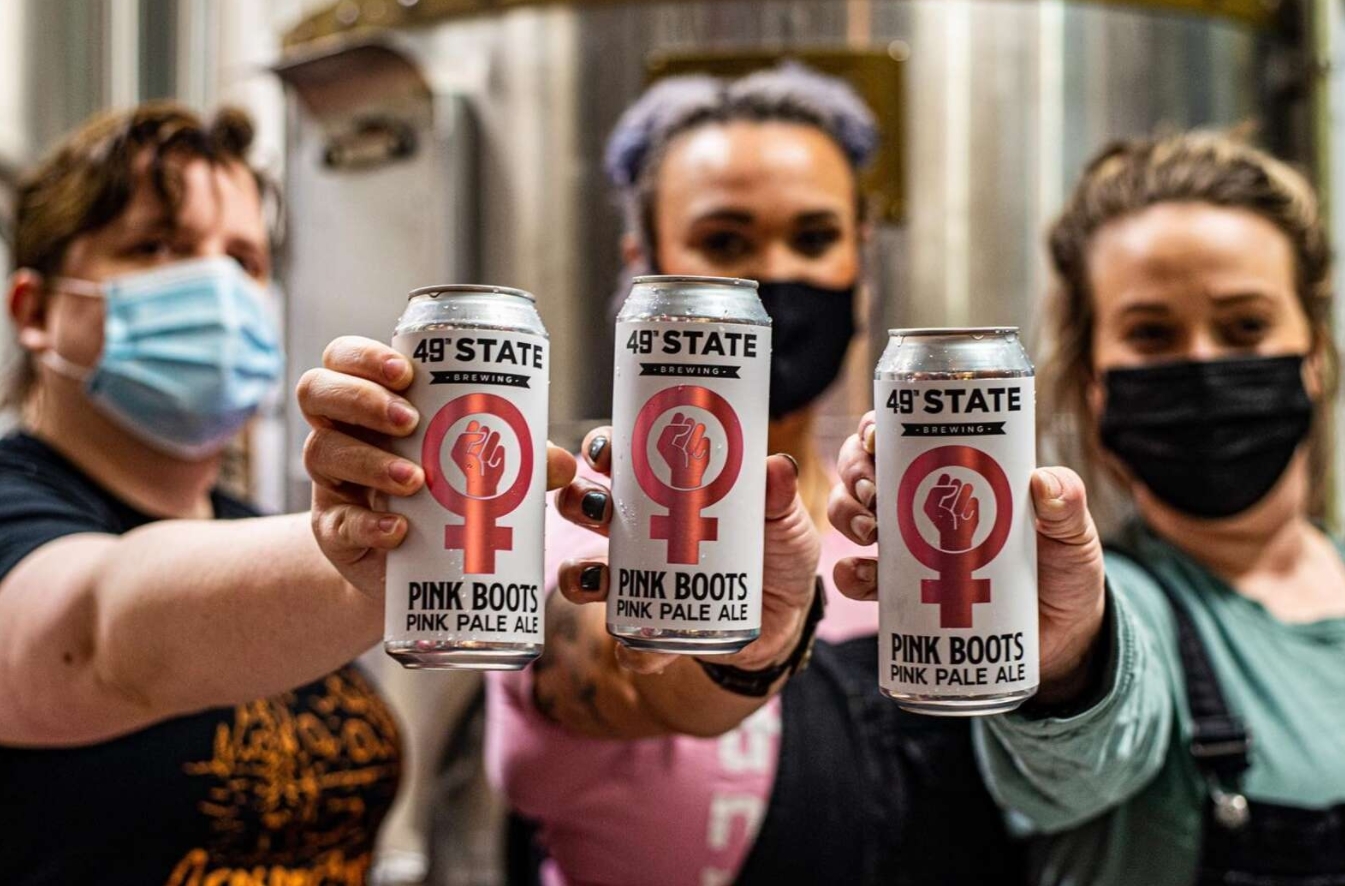
Pink Boots Society, too, has taken a big picture approach by bringing on Crafted for All, an anti-racist consulting group that helps groups “develop inclusive, equitable, and just practices that drive organizational success, build communities, and empower individuals.” The partnership resulted in a multifaceted survey aimed at gaining a deeper understanding of the many complicated identities their base holds apart from simply being women in beer. “We’ve been doing this work for 15 years focused on women but not the complete person, all the intersecting identities,” says Jordan. “We never before asked about ethnicity, sexual orientation, disability status, age—anything like that. We only asked if they identified as a woman and where they worked or intended to work. It was almost as if it didn't matter, but we know now that it does. For example, I’m a queer woman, but I’m also white, and that grants me privilege in this industry that doesn't exist for others.” The project also tackles the relationship between a member’s identity and their sense of belonging within the organization with questions addressing access to benefits, leadership aspirations, and whether they felt their contributions were being adequately recognized. The response rate was positive and the findings spotlighted some areas they hadn’t even realized needed specific attention.
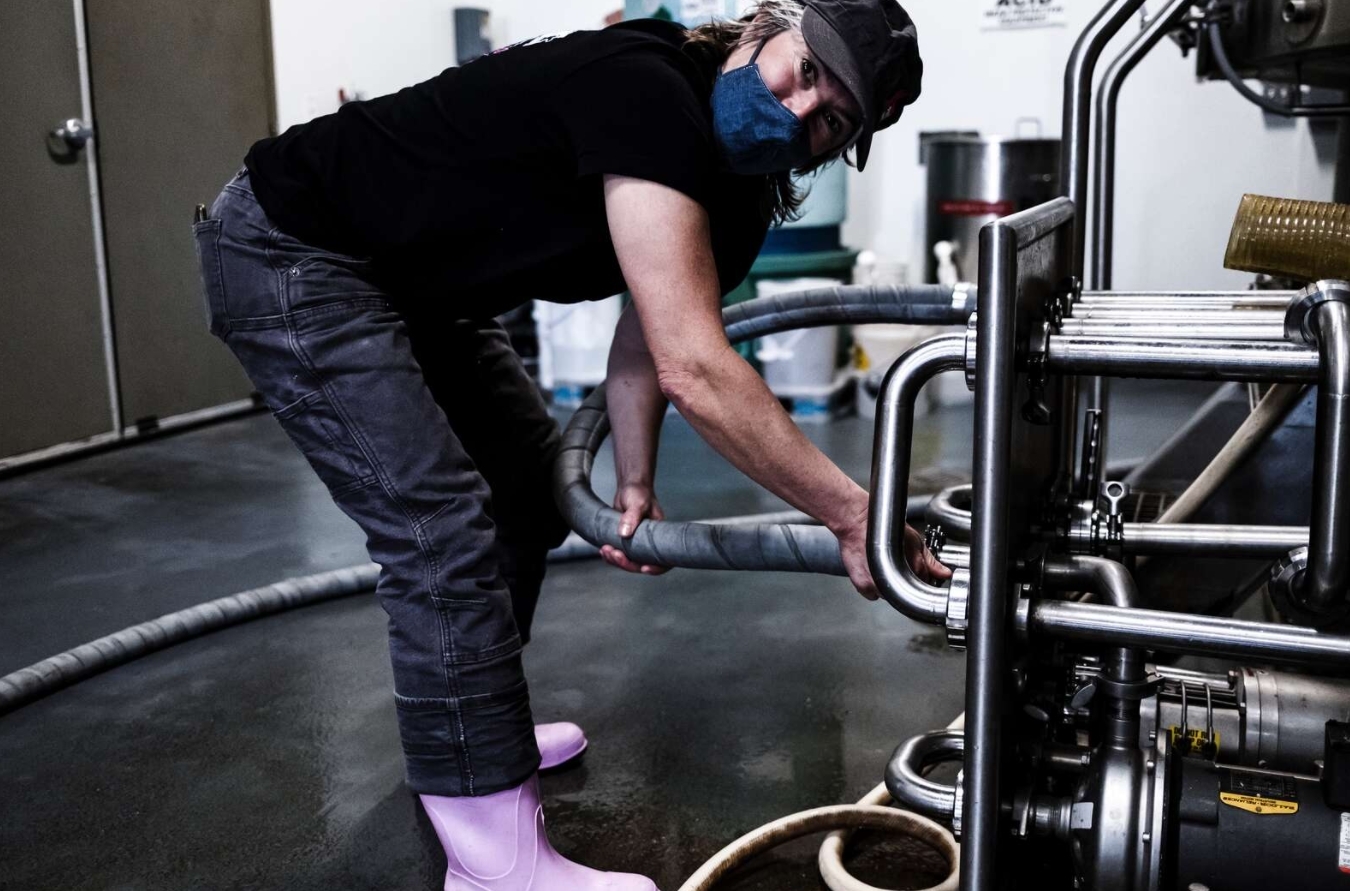
“One of the things we got out of it is about re-evaluating the language around our membership requirements to be more inclusive,” Jordan notes. “We made sure that our members know that you don't have to be cisgender to join. You can be trans, you can be nonbinary—the individual decides. Pink Boots Society has always been that way as far as I know, but if you don't say it out loud, if you don’t put it out there, then people wonder." Other action items included adding new democratically elected board members to the roster. One such recruit, Highland Park Brewery assistant general manager Blanca Quintero, jumped at the opportunity to represent her Los Angeles-based chapter while voicing her concerns from an elevated standpoint. “I think the organization took a hard look to ensure it was being as supportive as it could be while trying to put systems in place to not marginalize or exclude anyone,” Quintero says. “I saw areas where I could be of service helping address issues of inequity and inclusion, as well.” The refreshed board has also been highlighting members of colour on its blog, expanding membership to include women working in cider and other fermented beverages, and continuing to spur conversations about social justice within the brewing community on both a national and local level via Zoom check-ins with chapters from Albuquerque to Auckland. In the end, however, Jordan and the rest of her team acknowledge that the tide is just barely cresting when it comes to levelling the sudsy playing field.

“In 2007, Pink Boot Society was about showing that female brewers exist,” concludes Jordan. “When I think about what it is now and what it will be, it’s that all women have a place in the fermented alcohol beverage industry and deserve support in making it a more equitable and safe place for women to build a career and stay.” Of course, this year has been different for other reasons, too. The annual Collaboration Brew Day surrounding International Women’s Day encourages members all over the world to come together at a local facility to cook up an original beer using the same proprietary hop blend. A percentage of the final beer’s sales gets funnelled into Pink Boots Society’s scholarship programs. Of course, this year’s Collaboration Brew Day included Zoom brewing meetings and virtual events rather than the raucous social gatherings of yore. But Jordan has no doubt that the work of Pink Boots Society is going to continue, in whatever form that means, for many years to come. “One of the goals is to have the overall diversity of our organization be more diverse than the rest of the beer industry,” she says. “Pink Boots Society is not trying to look like a better organization. It’s about doing the work to be a better organization, and that’s ongoing. As soon as you think, ‘We got this,’ you actually don't, because that’s how real progress happens.” To help them keep that progress going, support the cause by raising a glass to the fierce women and nonbinary folks behind your favourite beers with one of these 11 limited edition Collaboration Brew Day releases.
snip

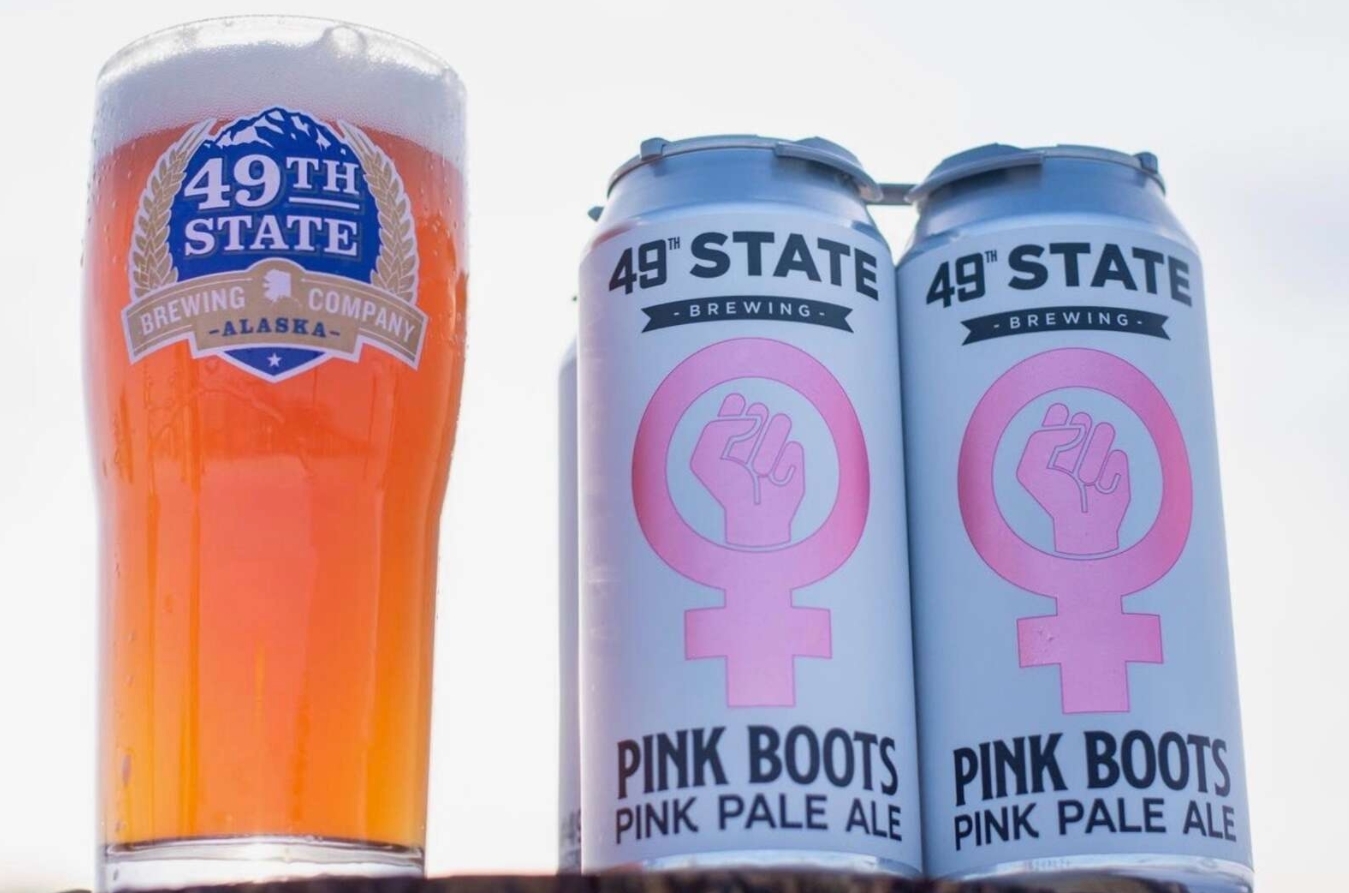
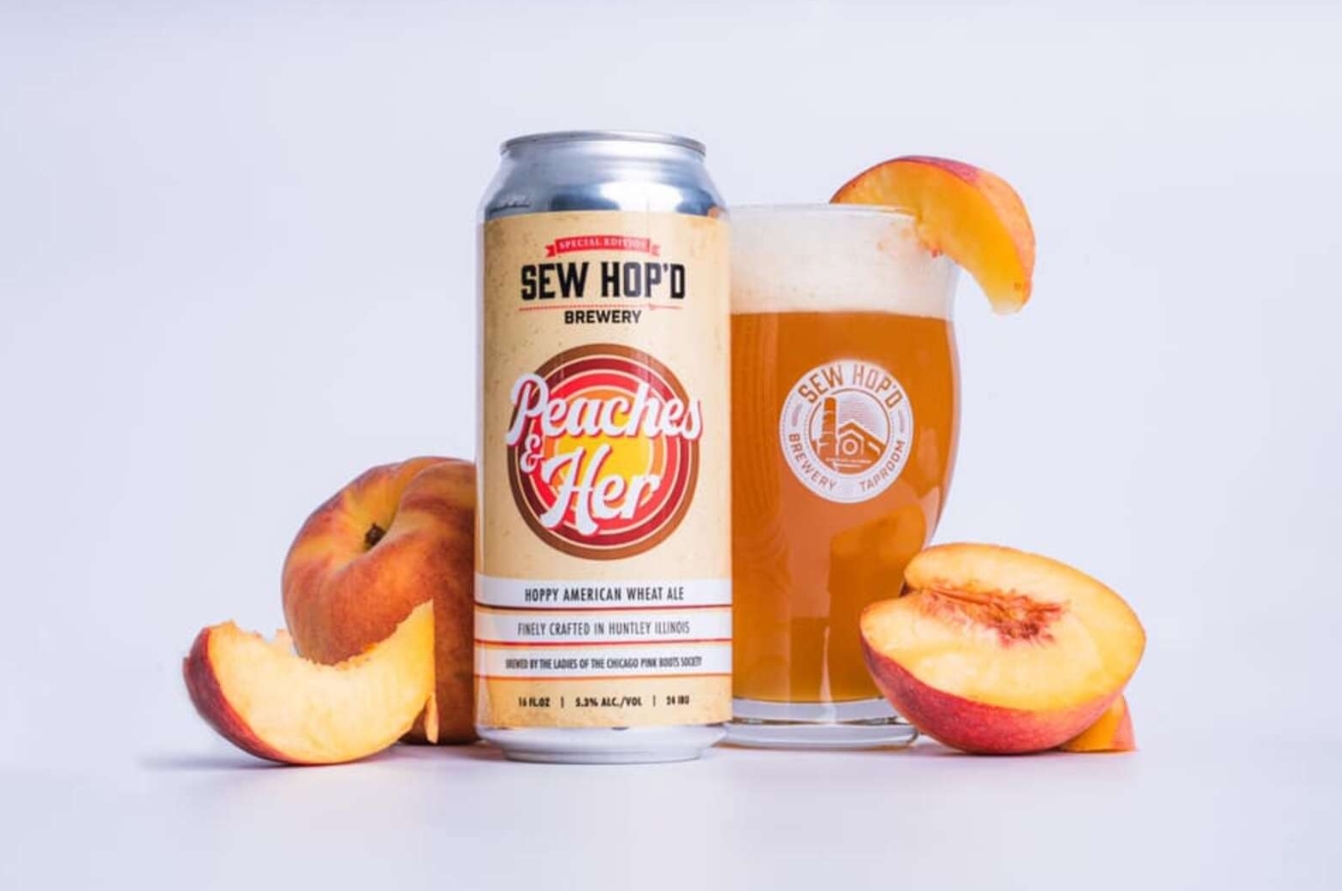
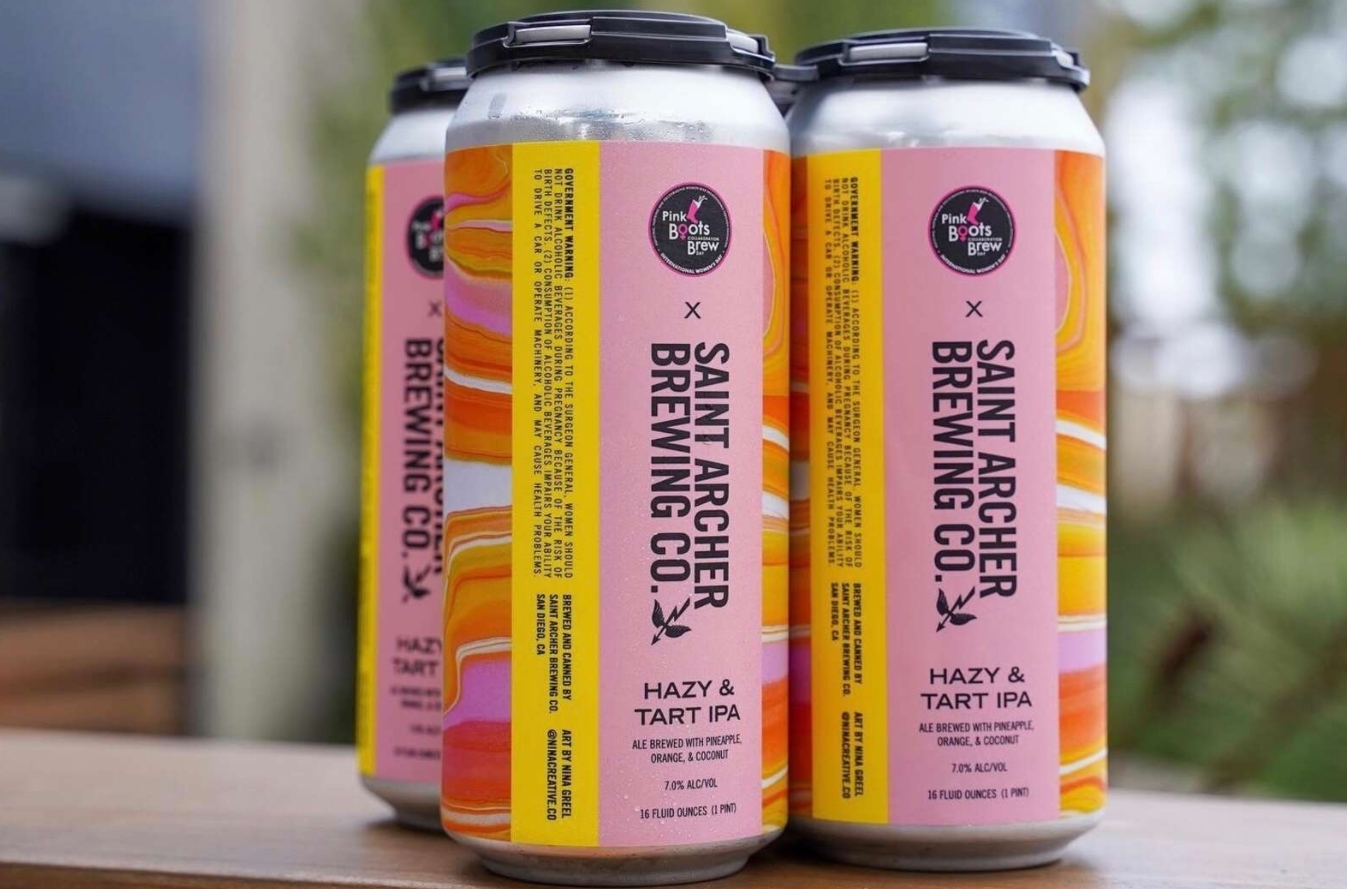
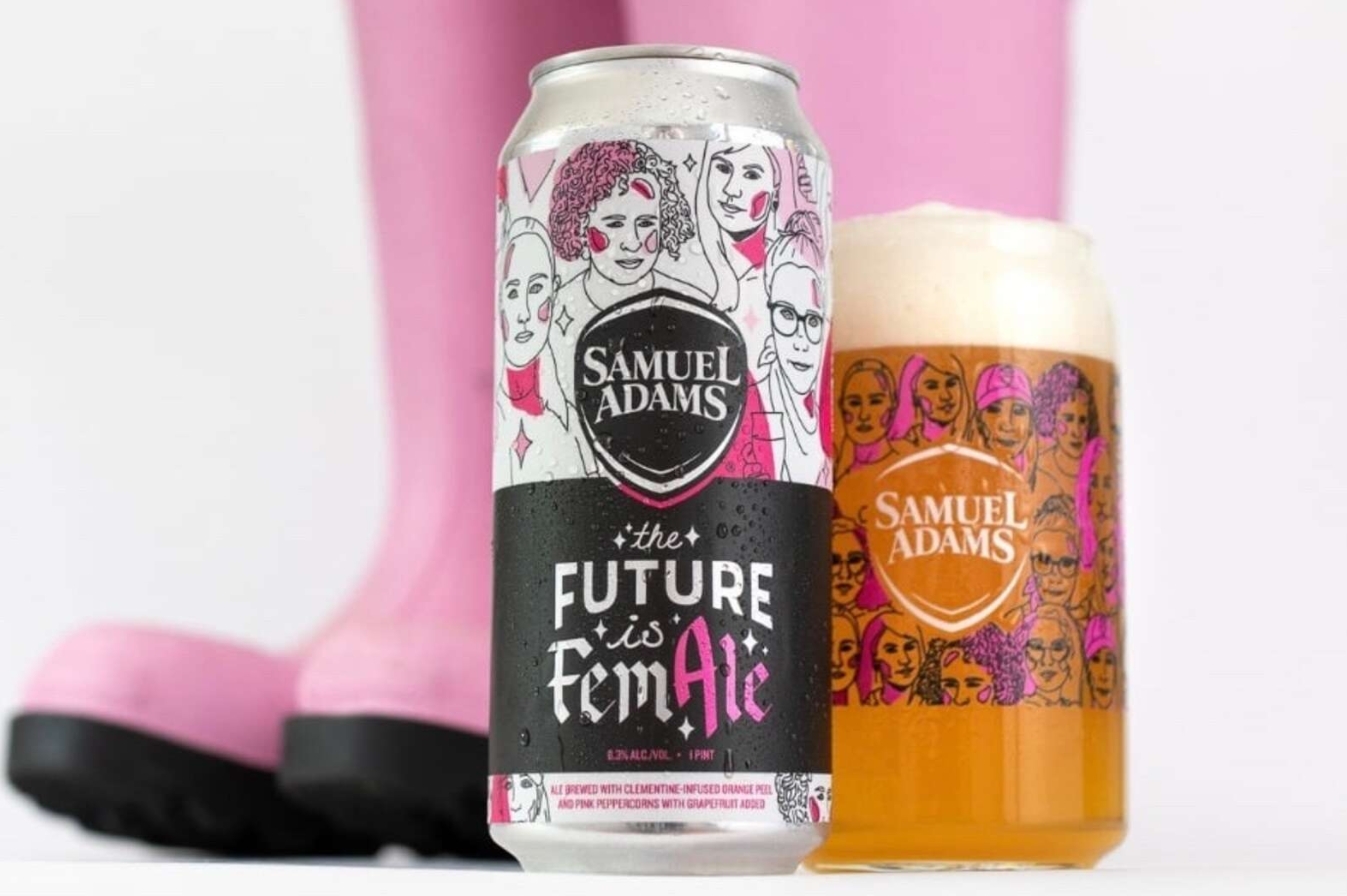

Pink Boots Society Wants Its Brewing Circle to Be Even More Inclusive
How the women-focused beer organization is thinking bigger after 2020.https://www.thrillist.com/drink/nation/pink-boots-society-women-owned-brewing

For nearly 15 years, the Pink Boots Society has made it its mission to educate and encourage more women to work in the craft beer world. But this past year was one full of reckoning, and the group realized that its intentions weren’t inclusive enough. “There used to be this tendency to point fingers at individual people or businesses as racist,” says Jen Jordan, president on behalf of the Pink Boots Society board of directors and a brewer at San Francisco’s Laughing Monk Brewing. “That still happens, but I think people are getting educated and understanding that looking internally is the way to go if you really want to make change.” In the wake of the surging Black Lives Matter movement and AAPI community support, in tandem with continued revelations around the #MeToo movement, industries across the globe are tackling their own systemic inequities. Craft beer is no exception. Race- and gender-based discrimination accusations have erupted at prominent outposts like Founders, Boulevard, and Angry Orchard, prompting the Brewers Association to adopt its first ever Code of Conduct in August 2020.

Pink Boots Society, too, has taken a big picture approach by bringing on Crafted for All, an anti-racist consulting group that helps groups “develop inclusive, equitable, and just practices that drive organizational success, build communities, and empower individuals.” The partnership resulted in a multifaceted survey aimed at gaining a deeper understanding of the many complicated identities their base holds apart from simply being women in beer. “We’ve been doing this work for 15 years focused on women but not the complete person, all the intersecting identities,” says Jordan. “We never before asked about ethnicity, sexual orientation, disability status, age—anything like that. We only asked if they identified as a woman and where they worked or intended to work. It was almost as if it didn't matter, but we know now that it does. For example, I’m a queer woman, but I’m also white, and that grants me privilege in this industry that doesn't exist for others.” The project also tackles the relationship between a member’s identity and their sense of belonging within the organization with questions addressing access to benefits, leadership aspirations, and whether they felt their contributions were being adequately recognized. The response rate was positive and the findings spotlighted some areas they hadn’t even realized needed specific attention.

“One of the things we got out of it is about re-evaluating the language around our membership requirements to be more inclusive,” Jordan notes. “We made sure that our members know that you don't have to be cisgender to join. You can be trans, you can be nonbinary—the individual decides. Pink Boots Society has always been that way as far as I know, but if you don't say it out loud, if you don’t put it out there, then people wonder." Other action items included adding new democratically elected board members to the roster. One such recruit, Highland Park Brewery assistant general manager Blanca Quintero, jumped at the opportunity to represent her Los Angeles-based chapter while voicing her concerns from an elevated standpoint. “I think the organization took a hard look to ensure it was being as supportive as it could be while trying to put systems in place to not marginalize or exclude anyone,” Quintero says. “I saw areas where I could be of service helping address issues of inequity and inclusion, as well.” The refreshed board has also been highlighting members of colour on its blog, expanding membership to include women working in cider and other fermented beverages, and continuing to spur conversations about social justice within the brewing community on both a national and local level via Zoom check-ins with chapters from Albuquerque to Auckland. In the end, however, Jordan and the rest of her team acknowledge that the tide is just barely cresting when it comes to levelling the sudsy playing field.

“In 2007, Pink Boot Society was about showing that female brewers exist,” concludes Jordan. “When I think about what it is now and what it will be, it’s that all women have a place in the fermented alcohol beverage industry and deserve support in making it a more equitable and safe place for women to build a career and stay.” Of course, this year has been different for other reasons, too. The annual Collaboration Brew Day surrounding International Women’s Day encourages members all over the world to come together at a local facility to cook up an original beer using the same proprietary hop blend. A percentage of the final beer’s sales gets funnelled into Pink Boots Society’s scholarship programs. Of course, this year’s Collaboration Brew Day included Zoom brewing meetings and virtual events rather than the raucous social gatherings of yore. But Jordan has no doubt that the work of Pink Boots Society is going to continue, in whatever form that means, for many years to come. “One of the goals is to have the overall diversity of our organization be more diverse than the rest of the beer industry,” she says. “Pink Boots Society is not trying to look like a better organization. It’s about doing the work to be a better organization, and that’s ongoing. As soon as you think, ‘We got this,’ you actually don't, because that’s how real progress happens.” To help them keep that progress going, support the cause by raising a glass to the fierce women and nonbinary folks behind your favourite beers with one of these 11 limited edition Collaboration Brew Day releases.
snip






March 28, 2021
https://www.thrillist.com/drink/nation/pink-boots-society-women-owned-brewing

For nearly 15 years, the Pink Boots Society has made it its mission to educate and encourage more women to work in the craft beer world. But this past year was one full of reckoning, and the group realized that its intentions weren’t inclusive enough. “There used to be this tendency to point fingers at individual people or businesses as racist,” says Jen Jordan, president on behalf of the Pink Boots Society board of directors and a brewer at San Francisco’s Laughing Monk Brewing. “That still happens, but I think people are getting educated and understanding that looking internally is the way to go if you really want to make change.” In the wake of the surging Black Lives Matter movement and AAPI community support, in tandem with continued revelations around the #MeToo movement, industries across the globe are tackling their own systemic inequities. Craft beer is no exception. Race- and gender-based discrimination accusations have erupted at prominent outposts like Founders, Boulevard, and Angry Orchard, prompting the Brewers Association to adopt its first ever Code of Conduct in August 2020.

Pink Boots Society, too, has taken a big picture approach by bringing on Crafted for All, an anti-racist consulting group that helps groups “develop inclusive, equitable, and just practices that drive organizational success, build communities, and empower individuals.” The partnership resulted in a multifaceted survey aimed at gaining a deeper understanding of the many complicated identities their base holds apart from simply being women in beer. “We’ve been doing this work for 15 years focused on women but not the complete person, all the intersecting identities,” says Jordan. “We never before asked about ethnicity, sexual orientation, disability status, age—anything like that. We only asked if they identified as a woman and where they worked or intended to work. It was almost as if it didn't matter, but we know now that it does. For example, I’m a queer woman, but I’m also white, and that grants me privilege in this industry that doesn't exist for others.” The project also tackles the relationship between a member’s identity and their sense of belonging within the organization with questions addressing access to benefits, leadership aspirations, and whether they felt their contributions were being adequately recognized. The response rate was positive and the findings spotlighted some areas they hadn’t even realized needed specific attention.

“One of the things we got out of it is about re-evaluating the language around our membership requirements to be more inclusive,” Jordan notes. “We made sure that our members know that you don't have to be cisgender to join. You can be trans, you can be nonbinary—the individual decides. Pink Boots Society has always been that way as far as I know, but if you don't say it out loud, if you don’t put it out there, then people wonder." Other action items included adding new democratically elected board members to the roster. One such recruit, Highland Park Brewery assistant general manager Blanca Quintero, jumped at the opportunity to represent her Los Angeles-based chapter while voicing her concerns from an elevated standpoint. “I think the organization took a hard look to ensure it was being as supportive as it could be while trying to put systems in place to not marginalize or exclude anyone,” Quintero says. “I saw areas where I could be of service helping address issues of inequity and inclusion, as well.” The refreshed board has also been highlighting members of colour on its blog, expanding membership to include women working in cider and other fermented beverages, and continuing to spur conversations about social justice within the brewing community on both a national and local level via Zoom check-ins with chapters from Albuquerque to Auckland. In the end, however, Jordan and the rest of her team acknowledge that the tide is just barely cresting when it comes to levelling the sudsy playing field.

“In 2007, Pink Boot Society was about showing that female brewers exist,” concludes Jordan. “When I think about what it is now and what it will be, it’s that all women have a place in the fermented alcohol beverage industry and deserve support in making it a more equitable and safe place for women to build a career and stay.” Of course, this year has been different for other reasons, too. The annual Collaboration Brew Day surrounding International Women’s Day encourages members all over the world to come together at a local facility to cook up an original beer using the same proprietary hop blend. A percentage of the final beer’s sales gets funnelled into Pink Boots Society’s scholarship programs. Of course, this year’s Collaboration Brew Day included Zoom brewing meetings and virtual events rather than the raucous social gatherings of yore. But Jordan has no doubt that the work of Pink Boots Society is going to continue, in whatever form that means, for many years to come. “One of the goals is to have the overall diversity of our organization be more diverse than the rest of the beer industry,” she says. “Pink Boots Society is not trying to look like a better organization. It’s about doing the work to be a better organization, and that’s ongoing. As soon as you think, ‘We got this,’ you actually don't, because that’s how real progress happens.” To help them keep that progress going, support the cause by raising a glass to the fierce women and nonbinary folks behind your favourite beers with one of these 11 limited edition Collaboration Brew Day releases.
snip






Pink Boots Society Wants Its Brewing Circle to Be Even More Inclusive
How the women-focused beer organization is thinking bigger after 2020.https://www.thrillist.com/drink/nation/pink-boots-society-women-owned-brewing

For nearly 15 years, the Pink Boots Society has made it its mission to educate and encourage more women to work in the craft beer world. But this past year was one full of reckoning, and the group realized that its intentions weren’t inclusive enough. “There used to be this tendency to point fingers at individual people or businesses as racist,” says Jen Jordan, president on behalf of the Pink Boots Society board of directors and a brewer at San Francisco’s Laughing Monk Brewing. “That still happens, but I think people are getting educated and understanding that looking internally is the way to go if you really want to make change.” In the wake of the surging Black Lives Matter movement and AAPI community support, in tandem with continued revelations around the #MeToo movement, industries across the globe are tackling their own systemic inequities. Craft beer is no exception. Race- and gender-based discrimination accusations have erupted at prominent outposts like Founders, Boulevard, and Angry Orchard, prompting the Brewers Association to adopt its first ever Code of Conduct in August 2020.

Pink Boots Society, too, has taken a big picture approach by bringing on Crafted for All, an anti-racist consulting group that helps groups “develop inclusive, equitable, and just practices that drive organizational success, build communities, and empower individuals.” The partnership resulted in a multifaceted survey aimed at gaining a deeper understanding of the many complicated identities their base holds apart from simply being women in beer. “We’ve been doing this work for 15 years focused on women but not the complete person, all the intersecting identities,” says Jordan. “We never before asked about ethnicity, sexual orientation, disability status, age—anything like that. We only asked if they identified as a woman and where they worked or intended to work. It was almost as if it didn't matter, but we know now that it does. For example, I’m a queer woman, but I’m also white, and that grants me privilege in this industry that doesn't exist for others.” The project also tackles the relationship between a member’s identity and their sense of belonging within the organization with questions addressing access to benefits, leadership aspirations, and whether they felt their contributions were being adequately recognized. The response rate was positive and the findings spotlighted some areas they hadn’t even realized needed specific attention.

“One of the things we got out of it is about re-evaluating the language around our membership requirements to be more inclusive,” Jordan notes. “We made sure that our members know that you don't have to be cisgender to join. You can be trans, you can be nonbinary—the individual decides. Pink Boots Society has always been that way as far as I know, but if you don't say it out loud, if you don’t put it out there, then people wonder." Other action items included adding new democratically elected board members to the roster. One such recruit, Highland Park Brewery assistant general manager Blanca Quintero, jumped at the opportunity to represent her Los Angeles-based chapter while voicing her concerns from an elevated standpoint. “I think the organization took a hard look to ensure it was being as supportive as it could be while trying to put systems in place to not marginalize or exclude anyone,” Quintero says. “I saw areas where I could be of service helping address issues of inequity and inclusion, as well.” The refreshed board has also been highlighting members of colour on its blog, expanding membership to include women working in cider and other fermented beverages, and continuing to spur conversations about social justice within the brewing community on both a national and local level via Zoom check-ins with chapters from Albuquerque to Auckland. In the end, however, Jordan and the rest of her team acknowledge that the tide is just barely cresting when it comes to levelling the sudsy playing field.

“In 2007, Pink Boot Society was about showing that female brewers exist,” concludes Jordan. “When I think about what it is now and what it will be, it’s that all women have a place in the fermented alcohol beverage industry and deserve support in making it a more equitable and safe place for women to build a career and stay.” Of course, this year has been different for other reasons, too. The annual Collaboration Brew Day surrounding International Women’s Day encourages members all over the world to come together at a local facility to cook up an original beer using the same proprietary hop blend. A percentage of the final beer’s sales gets funnelled into Pink Boots Society’s scholarship programs. Of course, this year’s Collaboration Brew Day included Zoom brewing meetings and virtual events rather than the raucous social gatherings of yore. But Jordan has no doubt that the work of Pink Boots Society is going to continue, in whatever form that means, for many years to come. “One of the goals is to have the overall diversity of our organization be more diverse than the rest of the beer industry,” she says. “Pink Boots Society is not trying to look like a better organization. It’s about doing the work to be a better organization, and that’s ongoing. As soon as you think, ‘We got this,’ you actually don't, because that’s how real progress happens.” To help them keep that progress going, support the cause by raising a glass to the fierce women and nonbinary folks behind your favourite beers with one of these 11 limited edition Collaboration Brew Day releases.
snip






March 27, 2021
On the national emergency facing voting rights, as on so much else, West Virginia senator Joe Manchin is in the catbird seat. His willingness to enact the COVID-19 relief and stimulus bill on a party-line vote via the budget reconciliation process made that Democratic success story possible. His unwillingness to countenance serious reform of the Senate filibuster on legislation that cannot be included in a reconciliation bill has become a potential bar to a lot of other Democratic priorities. Now that the Senate has taken up the For the People Act package of voting-rights legislation (known as H.R.1 in the House and S.1 in the Senate), Manchin’s position is again front and center, in part because he is the only Democratic senator who is not already co-sponsoring S.1, and in part because there is no evident Republican support for much of anything in the legislation. Additionally, as Ron Brownstein has so forcefully argued, preempting the restrictive voting provisions Republicans are promoting at the state level could be a condition precedent to Democratic electoral success as far as the eye can see. It has become the partisan issue par excellence, and perhaps the clearest example of the need for a filibuster carve out, like the ones that earlier provided for majority-vote approval of judicial and executive nominees. Today Manchin put out a statement on S.1, and it’s not encouraging for voting-rights advocates or for Democrats generally:
https://twitter.com/PaulBlu/status/1375116412533018631
His consistent theme is that bipartisanship is essential in any regulation of federal elections “to restore faith and trust in our democracy.” This is a pretty clear indication of sympathy with the GOP’s claim that all the voter-suppression efforts underway in Republican-controlled states are justified by the fact that Republican voters are buying into lies about the 2020 elections. Presumably, partisan voting-rights legislation — the only kind with a prayer of enactment in Congress — will make that lack of “faith and trust” even worse. Manchin cites a few minor provisions in S.1 as “bipartisan,” and thus capable of enactment. And he goes on to specifically support one provision (mandating early in-person voting opportunities) that Republicans typically reject.
He does not address a host of major topics covered in S.1, including gerrymandering reform, voter-registration improvements, voting-by-mail guarantees, ex-felon enfranchisement, voter-purge prevention, and public financing of congressional elections, among others. Presumably Manchin’s early-voting endorsement means he thinks some federal preemption of state voting procedures for federal elections is appropriate. But on the other hand, he goes out of his way to tout the “importance of local decision-making around voter accessibility and election security.” You could interpret this statement as a death sentence for major federal voting-rights legislation this year, which would be a green light to additional voter-suppression measures at the state level. Or it’s possible Manchin is setting up a test for Republicans they are sure to fail. That’s the optimistic possibility Brownstein raises:
https://twitter.com/JRubinBlogger/status/1375135188607512587
Another glass-is-not-empty take might be that Manchin did not specifically mention the John Lewis Voting Rights Advancement Act, a separate bill that would restore the VRA enforcement mechanisms the U.S. Supreme Court gutted in 2013. Earlier this week I suggested Manchin might be able to support that bill (which at least ought to be bipartisan, since it restores the VRA as it was when extensions were routinely passed with much Republican support), up to and including the point where it might have to be imposed on the Senate via a filibuster carve out. His statement did not, at least, rule that out. One signal to look for is whether Senate Republicans view Manchin’s statement as obliging them to look for a bipartisan set of federal election rules, or simply gloat that the “Democrat power grab” of S.1 has been blocked — which again, would simply mean that Republican state officials would be free to run wild without interference from Washington. If, as is most likely, Manchin’s plea for bipartisanship is greeted happily by the GOP as the death knell for federally enacted voting rights altogether, then the West Virginian should understand the game is up and start acting like a Democrat again.
snip
Manchin Values Bipartisanship Over Voting Rights
https://nymag.com/intelligencer/2021/03/manchin-values-bipartisanship-over-voting-rights.htmlOn the national emergency facing voting rights, as on so much else, West Virginia senator Joe Manchin is in the catbird seat. His willingness to enact the COVID-19 relief and stimulus bill on a party-line vote via the budget reconciliation process made that Democratic success story possible. His unwillingness to countenance serious reform of the Senate filibuster on legislation that cannot be included in a reconciliation bill has become a potential bar to a lot of other Democratic priorities. Now that the Senate has taken up the For the People Act package of voting-rights legislation (known as H.R.1 in the House and S.1 in the Senate), Manchin’s position is again front and center, in part because he is the only Democratic senator who is not already co-sponsoring S.1, and in part because there is no evident Republican support for much of anything in the legislation. Additionally, as Ron Brownstein has so forcefully argued, preempting the restrictive voting provisions Republicans are promoting at the state level could be a condition precedent to Democratic electoral success as far as the eye can see. It has become the partisan issue par excellence, and perhaps the clearest example of the need for a filibuster carve out, like the ones that earlier provided for majority-vote approval of judicial and executive nominees. Today Manchin put out a statement on S.1, and it’s not encouraging for voting-rights advocates or for Democrats generally:
https://twitter.com/PaulBlu/status/1375116412533018631
His consistent theme is that bipartisanship is essential in any regulation of federal elections “to restore faith and trust in our democracy.” This is a pretty clear indication of sympathy with the GOP’s claim that all the voter-suppression efforts underway in Republican-controlled states are justified by the fact that Republican voters are buying into lies about the 2020 elections. Presumably, partisan voting-rights legislation — the only kind with a prayer of enactment in Congress — will make that lack of “faith and trust” even worse. Manchin cites a few minor provisions in S.1 as “bipartisan,” and thus capable of enactment. And he goes on to specifically support one provision (mandating early in-person voting opportunities) that Republicans typically reject.
He does not address a host of major topics covered in S.1, including gerrymandering reform, voter-registration improvements, voting-by-mail guarantees, ex-felon enfranchisement, voter-purge prevention, and public financing of congressional elections, among others. Presumably Manchin’s early-voting endorsement means he thinks some federal preemption of state voting procedures for federal elections is appropriate. But on the other hand, he goes out of his way to tout the “importance of local decision-making around voter accessibility and election security.” You could interpret this statement as a death sentence for major federal voting-rights legislation this year, which would be a green light to additional voter-suppression measures at the state level. Or it’s possible Manchin is setting up a test for Republicans they are sure to fail. That’s the optimistic possibility Brownstein raises:
https://twitter.com/JRubinBlogger/status/1375135188607512587
Another glass-is-not-empty take might be that Manchin did not specifically mention the John Lewis Voting Rights Advancement Act, a separate bill that would restore the VRA enforcement mechanisms the U.S. Supreme Court gutted in 2013. Earlier this week I suggested Manchin might be able to support that bill (which at least ought to be bipartisan, since it restores the VRA as it was when extensions were routinely passed with much Republican support), up to and including the point where it might have to be imposed on the Senate via a filibuster carve out. His statement did not, at least, rule that out. One signal to look for is whether Senate Republicans view Manchin’s statement as obliging them to look for a bipartisan set of federal election rules, or simply gloat that the “Democrat power grab” of S.1 has been blocked — which again, would simply mean that Republican state officials would be free to run wild without interference from Washington. If, as is most likely, Manchin’s plea for bipartisanship is greeted happily by the GOP as the death knell for federally enacted voting rights altogether, then the West Virginian should understand the game is up and start acting like a Democrat again.
snip
Profile Information
Gender: FemaleHometown: London
Home country: US/UK/Sweden
Current location: Stockholm, Sweden
Member since: Sun Jul 1, 2018, 07:25 PM
Number of posts: 43,282